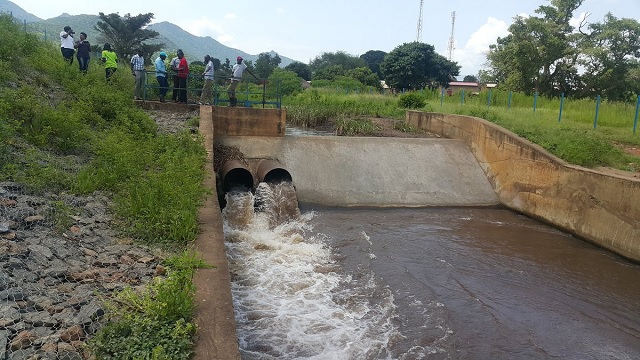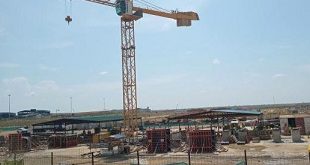
Kampala, Uganda | THE INDEPENDENT | The State Minister of Agriculture, Animal Industries and Fisheries, Bright Rwamirama has acknowledged that technical errors have affected the operations of Agoro Irrigation Scheme despite a number of rehabilitations. His remarks follow complaints from local leaders and residents of Lamwo over the dysfunctional irrigation scheme, which has affected the livelihood of hundreds of farmers in the district.
Doris Abalo, a resident of Lamwo district, said many farmers cannot use the scheme despite having been rehabilitated twice. “Even before the rehabilitation of the irrigation scheme, at least the traditional method of pumping water was better than the one which the government has brought,” Abalo said.
In October, local authorities informed the farmers in Agoro that work on the irrigation scheme is now at 74 percent. However, Abalo thinks there is still more work to be done.
“If they are saying the work is at a certain percentage, which is towards completion, we see that there is no value for money,” she added. Patrick Muhinda Agaba, the Lamwo District Production Officer, said there should have been prior work done to facilitate gravitational water flow such as landscaping before the rehabilitation of the scheme.
“So more funding sources should be secured for that to be done so that the rehabilitation of the water flow benefits the main blocks of land,” Agaba said. Rwamirama agreed that the rehabilitation has not helped, because the work was taken over by the Ministry of Water and Environment, which does not have technical knowledge of the volume of water required for agriculture.
He cited the Lwengo Irrigation Scheme as one of the schemes that consumed a lot of money yet it is serving only three families instead of the intended three sub-counties.
He argued that the Agoro Irrigation Scheme which sits on 1,675 hectares should have been made to flow by gravity, arguing that the current design required the use of pumps that the farmers cannot afford.
Rwamirama revealed that because of the many faults in the rehabilitation of irrigation schemes across the county, the mandate is returning to the MAAIF because it is the only ministry that has technical people who know the volume of water needed from particular crops.
The irrigation scheme constructed in the late 1960s with funding from the World Bank boosted rice growing and vegetables during the dry season in the area.
To increase its capacity, the irrigation scheme, which serves an estimated 1,000 farmers, was rehabilitated in 2011-2013 at Shillings 27 billion by the Ministry of Water and Environment to boost agricultural productivity in the area but the scheme did not work well.
In 2019, the government through the Ministry of Water and Environment said it would embark on repairs to the said scheme, with the project expected to cost Shs 6Bn, after it was abandoned by many farmers because of its poor state.
In 2021, the government again contracted Geet International Pvt Ltd, to undertake another rehabilitation work on the scheme. However, since work started in August 2021 with a forecast that it would be completed in nine months, it is yet to be completed. However, the farmers can no longer use the scheme as its design was changed during repair works, which affected the flow of water to their gardens.
Teopista Atim, a farmer who has been using the scheme since 2000, said over 100 members of Agoro Self-help Irrigation Cooperative, which she is under, have not been able to use the water from the scheme, since 2016.
*****
URN
 The Independent Uganda: You get the Truth we Pay the Price
The Independent Uganda: You get the Truth we Pay the Price



